If you are a car hobbyist who is considering an engine swap for your vehicle, you have likely already put in some effort into determining which features are most important to you. With a variety of options to choose from, it can be daunting to dial in on exactly what you need for an engine swap.
If you have selected Ford’s Coyote engine as your swap of choice, read up on the things that you should know and prepare for beforehand so that you can complete the swap process without hitting any unexpected hiccups.
Coyote Engine vs. LS Engine for Swaps
Choosing the right engine for a swap is one of the toughest choices of the process, because nowadays, you have multiple stellar options to consider. The Coyote engine by Ford tends to have the capacity for higher power than the LS engine that was created by GM.
However, in exchange, the Coyote is made up of many more moving parts and tends to be more nuanced in terms of installation and getting the unit to fit. However, both options can produce powerful vehicles, and if you have decided that the Coyote is the right choice for you, be sure to also consider the following aspects of installation and setup that the Coyote will require.
Engine Fit
As mentioned previously, the Coyote is an impressively large item with several moving parts. As such, it can be challenging or even impossible to fit a massive Coyote engine into some types of vehicles, such as the early Falcons. However, with some modification, many vehicles are amenable to a Coyote swap; if you are willing to notch the shock towers to accommodate the significant width of the Coyote’s cylinder heads, you can get the system to fit into many frames. Keep in mind, however, that a Coyote is heavy, and you may want to consider opting for an aftermarket subframe so that you are not limited to older suspension.
Exhaust System
The tubular heads of multiple varieties of Coyote engines may not fit the specific model you are using. FRPP cast manifolds and shorty headers from JBA are options to overcome this challenge, as are a number of configurations offered by BBK and Kooks; however, this may require an aftermarket K-member or crossmember that will fit into the body. Take some measurements and spend some time carefully determining which pieces you will need in order to route your exhaust system correctly.
Oil and Filter Setup
If you elect to completely replace the front end during your Coyote swap, one additional benefit is the far fewer issues you can expect with setting up your oil and filtration. The Coyote’s rear sump won’t clear many of the older chassis, and even the standard oil filter protrudes at nearly 45 degrees from the block (on the driver’s side), which may cause similar problems with getting everything to fit.
Cooling System
Many current Mustangs place their coolant fill cap low in the system, but Coyote swaps will need this cap to be the highest point. In order to achieve this, many swaps rely on separate remote-mounted surges or supply tanks, in addition to spliced supply and return hoses for the heater. The hose assembly will also require a 5/16 restrictor. Mechanical fans will not work, so an electric fan is needed as well.
Expected Costs
The cost of a Coyote engine swap is not set in stone; it will vary depending upon how many changes you are making and what your overall goals are. The engine and other parts together typically range between $12,000 and $14,000, but your costs could climb up to $20,000 or more if you elect to change the entire front end and add new brakes, suspension and so on. However, one of the best ways to ensure that your project uses the most effective parts possible—so that you do not spend money and time on equipment and modifications that do not work—is to seek the help of professional engine swap and auto body restoration experts.
Rely on the Auto Body and Engine Swap Pros for Your Project
Whether you are considering your options for an engine swap for the first time or you have become stuck with an unexpected hiccup during your own Coyote swap, the pros at Robs Customs & Restorations would be happy to help you stay on track toward your engine swap goals. Reach out to schedule an appointment to discuss your options, strategize about how to ensure that your project succeeds and even leave the swap work to the pros if you find that simpler than tackling the project yourself.
